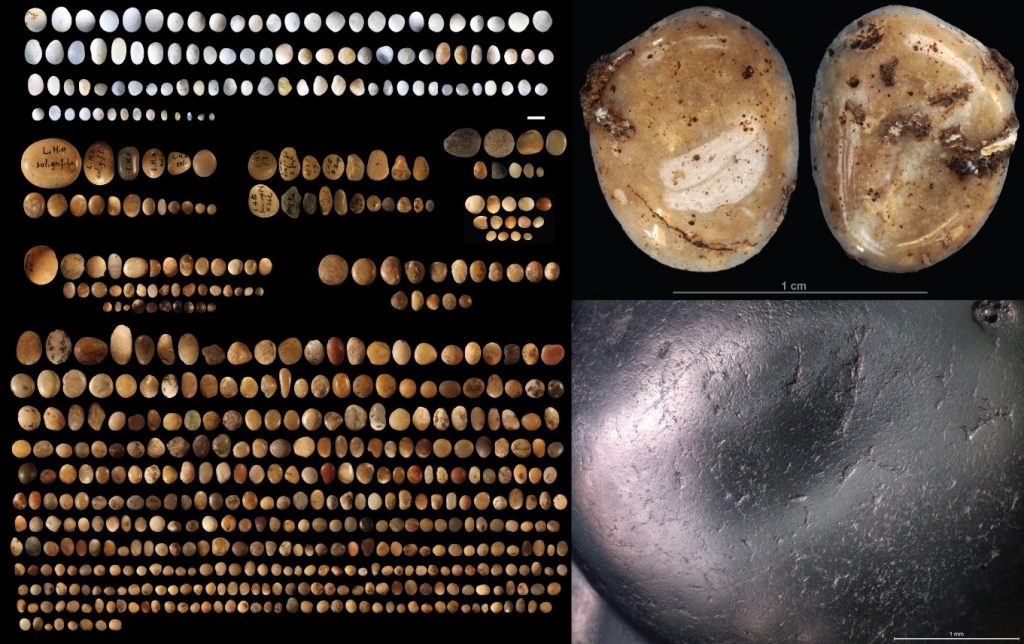Counting with the help of homologous items is widely attested in the ethnographic record. A team of QUANTA researchers has just published in the journal PLOS ONE results of the analysis of hundreds of small polished pebbles discovered at Palaeolithic sites in south-west France, dated between 29,000 and 20,000 years BP. They demonstrate that these gravels and their shiny appearance are not of natural origin. They were selected, polished and transported by Palaeolithic people for a purpose that researchers try to identify with the help of systematic cross-cultural analyses.
Five Palaeolithic sites in south-west France dated between 29,000 and 20,000 BP have yielded very shiny small pebbles that have intrigued researchers since the 1930s. The first discoverer, Denis Peyrony, proposed they were attached next to each other on a piece of leather with a resin. Other researchers simply reported their discovery without trying to determine whether their presence in the archaeological layers and their brilliance were due to natural processes or human activity. A team of QUANTA researchers, led by Lila Geis and Francesco d’Errico, has just solved the mystery. They were helped in this by the discovery of these small pebbles at the site of Landry, France, recently excavated with modern techniques.

By comparing the spatial distribution of polished and unpolished small pebbles at this site, they were able to show that polished small pebbles are only found in the habitation area. In parallel, they subjected archaeological pebbles from four Palaeolithic sites excavated in the past, pebbles collected from several natural formations and experimentally polished pebbles using several techniques to morphometric, colorimetric, microscopic and rugosimetric analyses.
Their results clearly indicate that polished small pebbles such as those found in Palaeolithic sites do not occur in nature. They must have been deliberately chosen. The lustrous appearance of archaeological small pebbles is the result of both intentional polishing, producing microscopic parallel striations probably intended to make the gravels shinier, and their transport.
The cross-cultural analysis that accompanies the study indicates that in ethnographically known societies, similar gravels were mainly used for magico-religious ritual purposes (charms, witchcraft, divination, etc.), in games, as parts of musical instruments and as counting systems. Although it is difficult to identify the precise function of these gravels, it is clear that they reflect a cultural innovation that emerged during the Gravettian culture and continued throughout the Solutrean culture, between 26,000 and 20,000 years ago.
Read the publication in PLOS ONE: https://doi.org/10.1371/journal.pone.0291552
